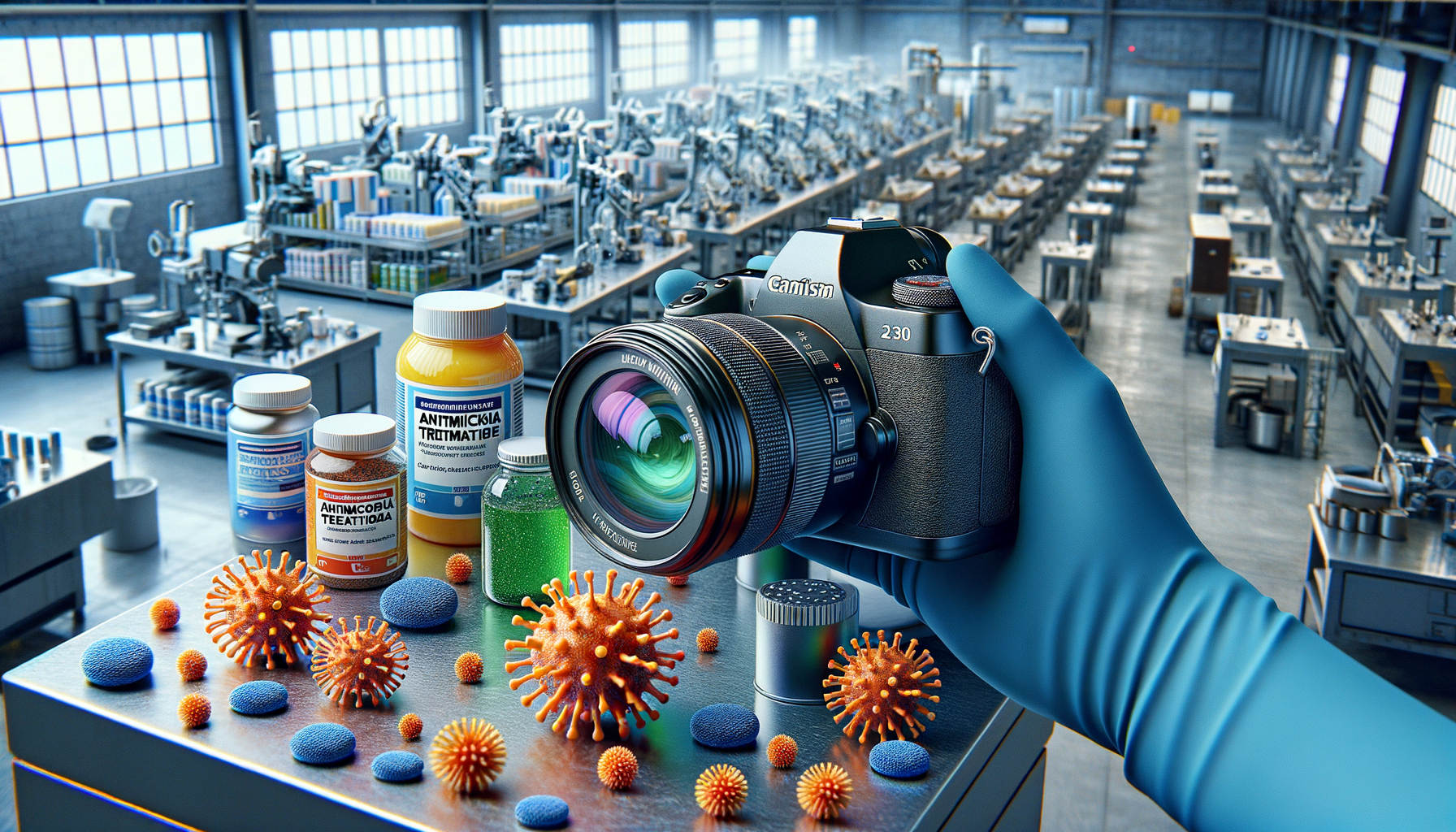Unlocking the Power of Antimicrobial Treatments
In our rapidly changing world, the need to maintain product quality, ensure safety, and extend shelf life has grown significantly. Antimicrobial treatments have emerged as a transformative solution, presenting a vast array of advantages across various industries. These innovative treatments serve as a crucial line of defense against spoilage and contamination, impacting everything from food preservation to infection control. This article explores the multifaceted benefits of antimicrobial treatments, the technological innovations behind them, and the necessary measures to combat antimicrobial resistance.
Safeguarding Food Quality and Safety
The food industry stands at the forefront of adopting antimicrobial treatments. The rationale is straightforward: these agents create an environment that is inhospitable to harmful microorganisms, effectively preventing spoilage and ensuring the quality and safety of our food products. By inhibiting the growth of dangerous bacteria, mold, and fungi, antimicrobial treatments work tirelessly to keep our food fresh and free from contamination. This not only prolongs the shelf life of food items but also minimizes waste, fostering a more sustainable food supply chain.
For instance, imagine grocery store shelves lined with fresh produce, all thanks to antimicrobial treatments that inhibit the growth of spoilage organisms. Similarly, antimicrobial substances can be integrated into food packaging, providing an extra layer of protection. A prime example is the use of silver nanoparticles in food packaging materials, which have been proven to effectively reduce bacterial contamination. This cutting-edge technology empowers consumers to enjoy their favorite foods with confidence, knowing that they are safe for consumption.
Moreover, the implementation of these treatments is not solely focused on packaged goods. Restaurants and food service operations are increasingly adopting antimicrobial surfaces in their kitchens to combat cross-contamination and ensure food safety. For instance, the use of antimicrobial coatings on countertops, cutting boards, and utensils helps reduce the risk of foodborne pathogens spreading, ultimately safeguarding both the food and the consumers’ health.
Extending Shelf Life with Active Packaging
The concept of antimicrobial active packaging is revolutionizing the food industry. Picture a scenario where your gluten-free sliced bread or artisanal cheese stays fresh and delicious for days longer than usual. This dream is becoming a reality through the incorporation of antimicrobial agents into packaging materials. These materials work actively to inhibit the growth of microorganisms, thus extending the shelf life of perishable goods significantly.
This advanced technology not only helps reduce food waste but also enhances consumer confidence. For example, antimicrobial packaging for ready-to-eat meals can ensure that consumers receive products that remain fresh even after several days in the refrigerator. This innovation is not just about preserving food quality; it also plays a vital role in ensuring food safety. By preventing microbial growth, we reduce the risk of foodborne illnesses, which can lead to severe health complications.
Additionally, the versatility of antimicrobial packaging extends beyond food products. It also finds applications in pharmaceuticals and cosmetics, where maintaining product integrity is paramount. By utilizing antimicrobial treatments, manufacturers can ensure that their products remain effective and free from harmful microbial contamination throughout their shelf life.
Promoting Faster Wound Healing
Beyond the realms of food and packaging, antimicrobial treatments have found a pivotal role in the healthcare sector, particularly in wound healing applications. By incorporating these agents into various materials, such as hydrogel beads and antimicrobial films, medical professionals can create environments that deter infections while promoting faster recovery for patients. This innovative approach is essential in modern medicine, where infection control is paramount for improving patient outcomes.
Antimicrobial dressings, for example, can be used in treating chronic wounds that are resistant to standard therapies. These dressings not only provide a protective barrier against external contaminants but also release antimicrobial agents that actively combat infection. As a result, patients experience quicker healing times and lower risks of complications, leading to a more efficient recovery process. Furthermore, the integration of antimicrobial coatings on medical devices, such as catheters and implants, significantly reduces the incidence of post-surgical infections, which can be both costly and detrimental to patient health.
The significance of antimicrobial treatments in healthcare is underscored by the growing prevalence of healthcare-associated infections (HAIs). These infections can have serious consequences, including prolonged hospitalization and increased healthcare costs. By utilizing antimicrobial technologies, healthcare providers can take proactive measures to mitigate the risks associated with HAIs, leading to better patient care and improved outcomes.
Tackling Antimicrobial Resistance
While antimicrobial treatments offer numerous benefits, it is essential to address the growing concern of antimicrobial resistance (AMR). As microorganisms evolve and adapt, the effectiveness of these treatments can diminish over time, making it crucial to implement a multifaceted approach to combat this challenge. The consequences of unchecked antimicrobial resistance are stark; they include increased healthcare costs, prolonged hospital stays, and higher mortality rates.
To combat AMR, we must prioritize infection prevention and control measures. A comprehensive, whole-systems approach that includes improved diagnostics and targeted treatments can significantly reduce the reliance on antimicrobial interventions. For instance, implementing strict hygiene protocols in healthcare settings can minimize the spread of infections, thereby reducing the need for antimicrobial treatments.
Strengthening surveillance systems is another critical measure. Collecting robust data on antimicrobial use and resistance patterns can provide valuable insights that guide targeted interventions. For example, hospitals can track infection rates and resistance trends to develop tailored strategies that mitigate the risks associated with AMR.
Investing in research and development is vital for the advancement of new antimicrobial agents, diagnostics, and treatments. Innovations such as bacteriophages, which are viruses that specifically target bacteria, hold promise as alternatives to traditional antibiotics. Continued exploration in this field can yield new solutions that effectively combat resistant strains of bacteria.
Moreover, public engagement and education are indispensable components of the fight against antimicrobial resistance. Raising awareness about the risks associated with inappropriate antimicrobial use is critical. Public campaigns can educate individuals on the importance of adhering to prescribed treatments and understanding when antibiotics are genuinely necessary. By promoting responsible use, we can collectively mitigate the impact of antimicrobial resistance on public health.
Conclusion
Antimicrobial treatments have emerged as a formidable tool in our arsenal, offering a vast array of advantages across various industries. Whether it is preserving food freshness, extending shelf life, or promoting faster wound healing, these innovative solutions are reshaping our approach to product development and consumer safety. However, the rising threat of antimicrobial resistance necessitates a proactive and collaborative response. By implementing infection prevention strategies, strengthening surveillance systems, investing in research, and engaging with the public, we can ensure the responsible use and continued efficacy of these life-saving treatments. Embracing these solutions responsibly will unlock the full potential of antimicrobial treatments, paving the way for a safer and more sustainable future for everyone.
Sources:
- https://documents1.worldbank.org/curated/en/323311493396993758/pdf/final-report.pdf
- https://www.gov.uk/government/publications/uk-5-year-action-plan-for-antimicrobial-resistance-2024-to-2029/confronting-antimicrobial-resistance-2024-to-2029
- https://www.ncbi.nlm.nih.gov/pmc/articles/PMC9422339/
- https://www.cdc.gov/tatfar/php/about/index.html
This article is generated with the help of SafeComs AI, Automation Bot to do that.
.



